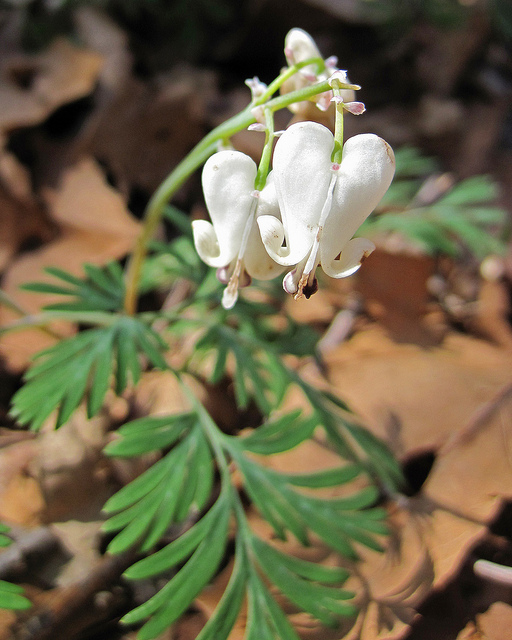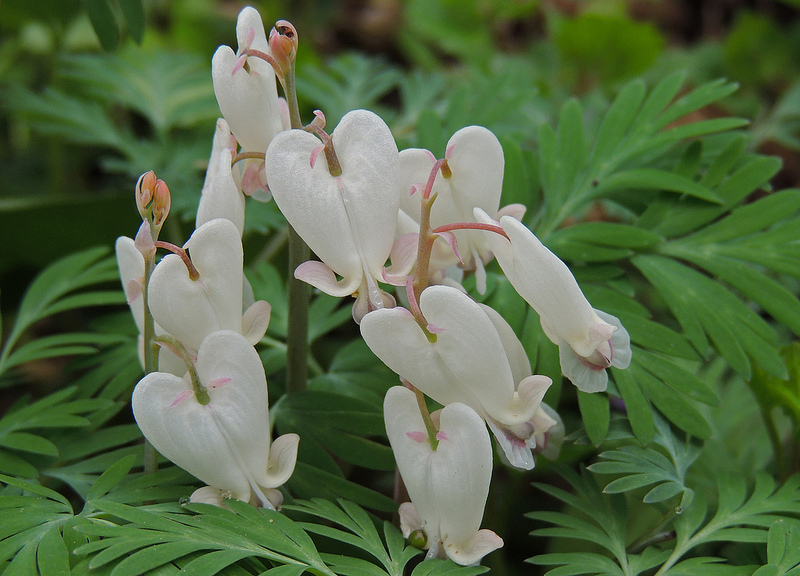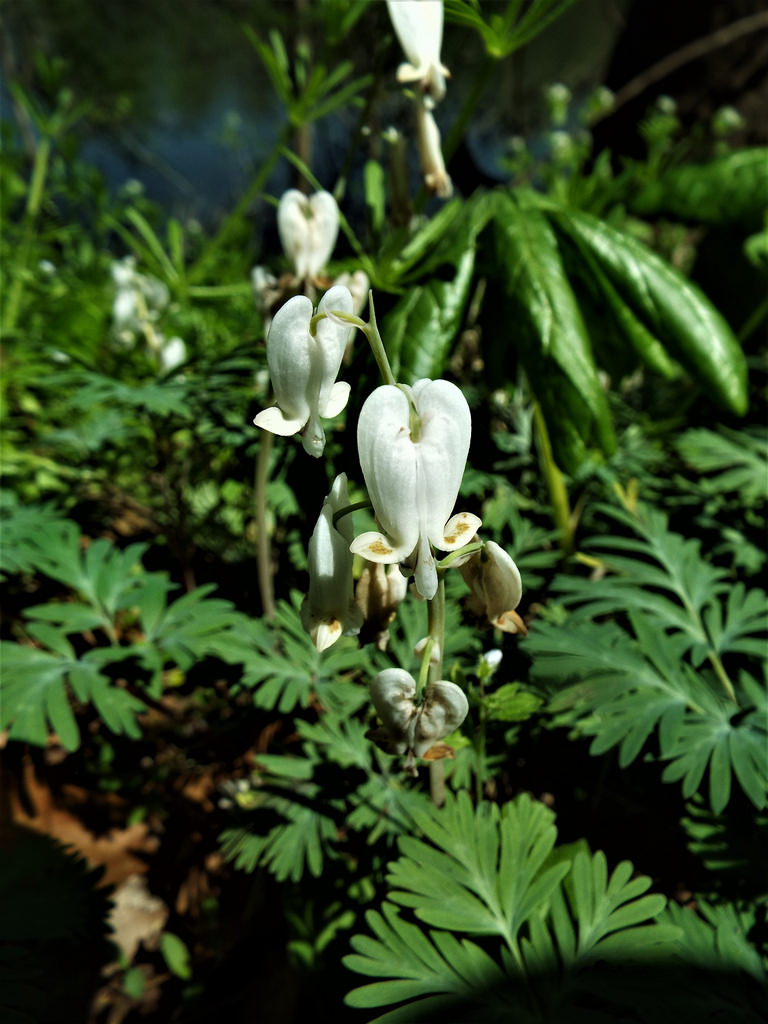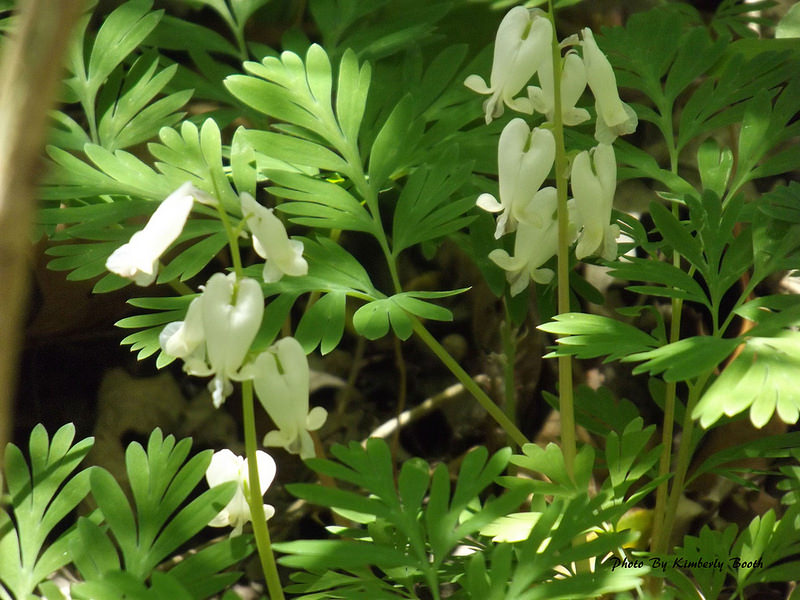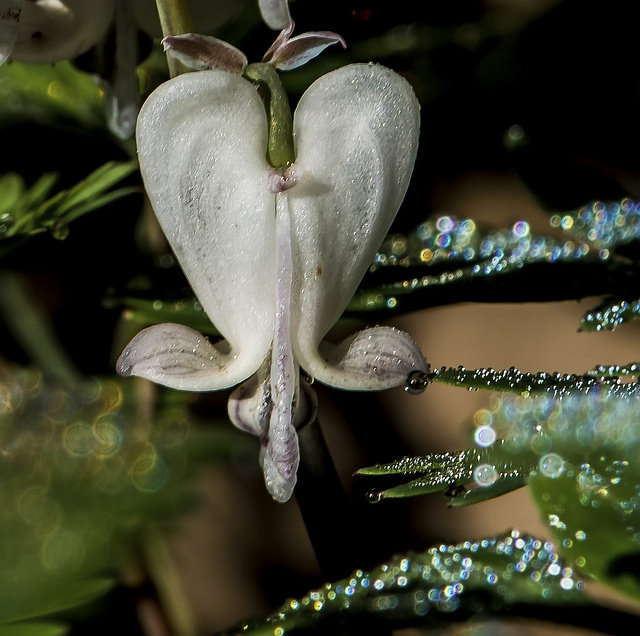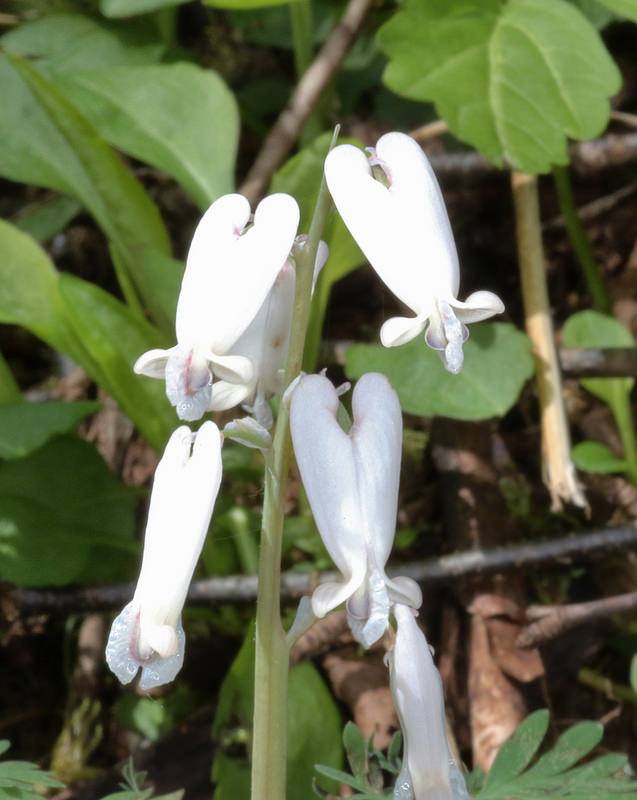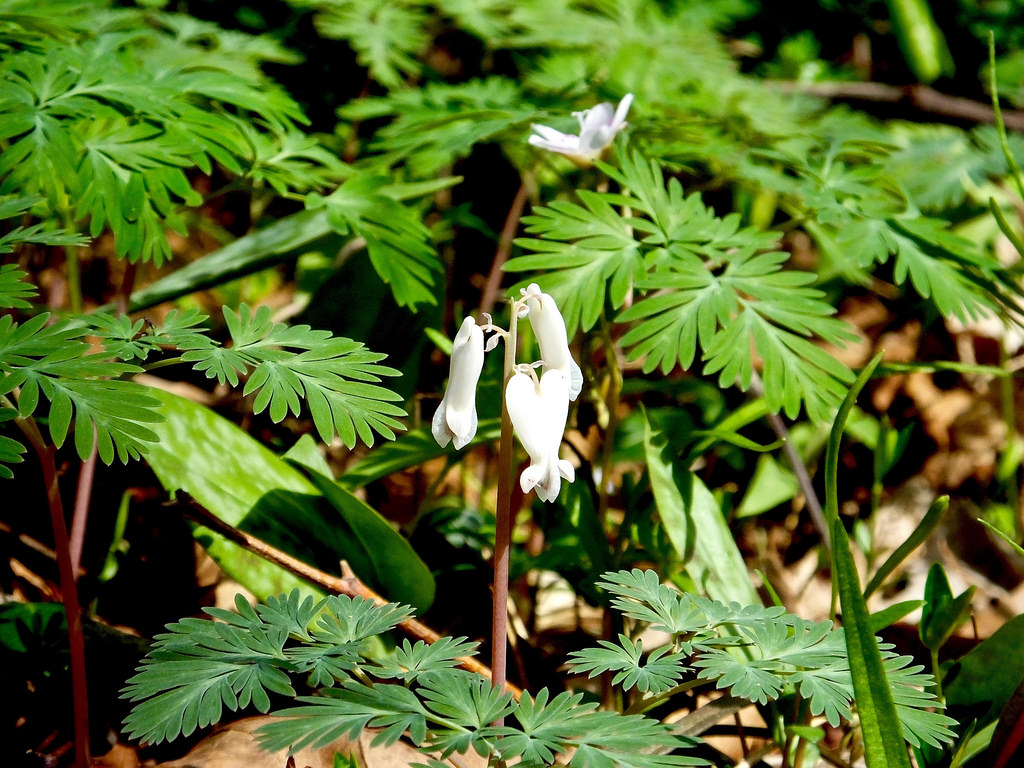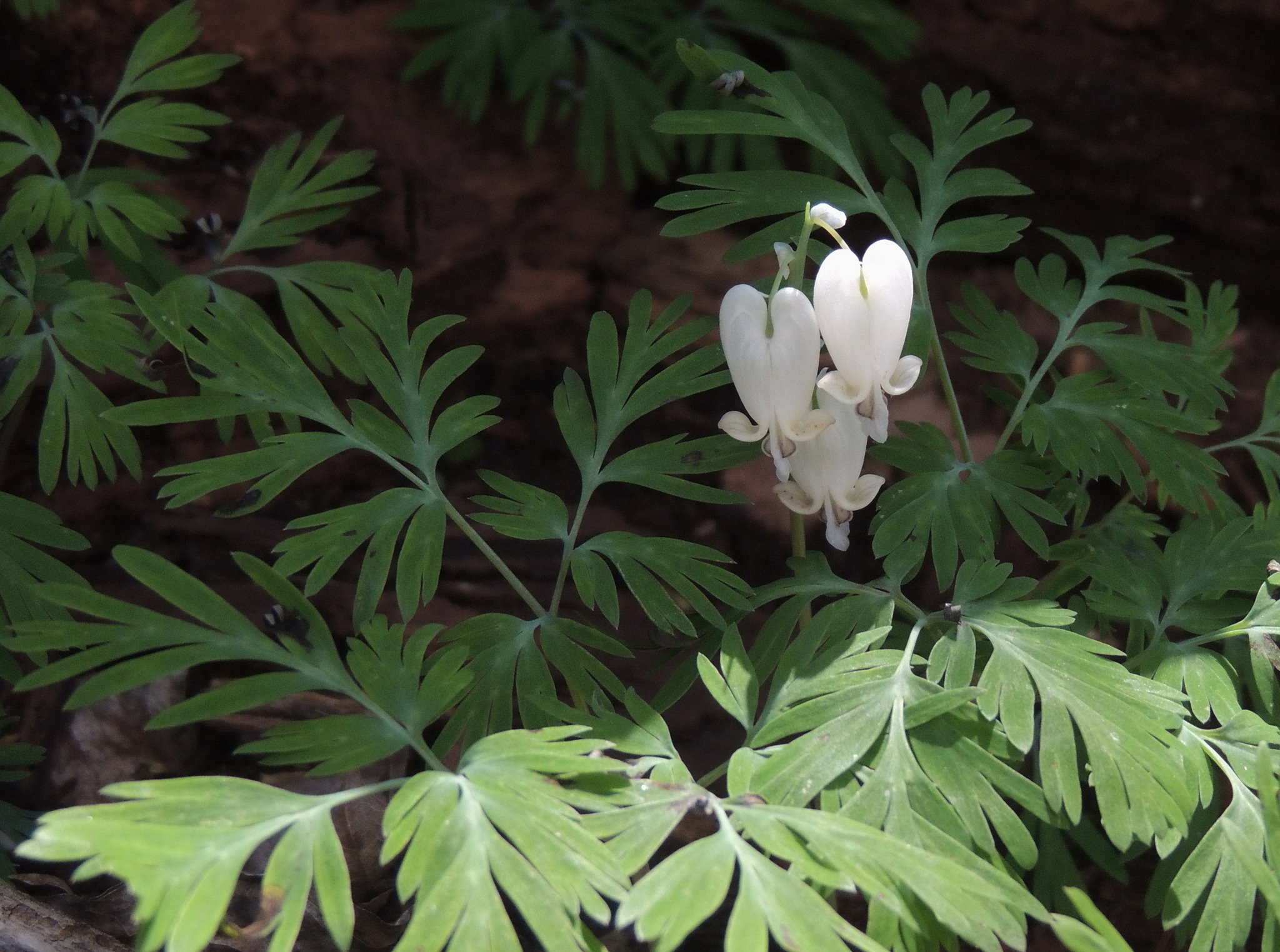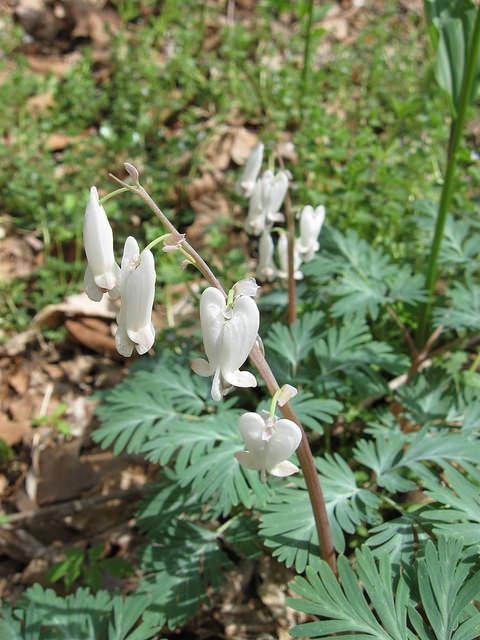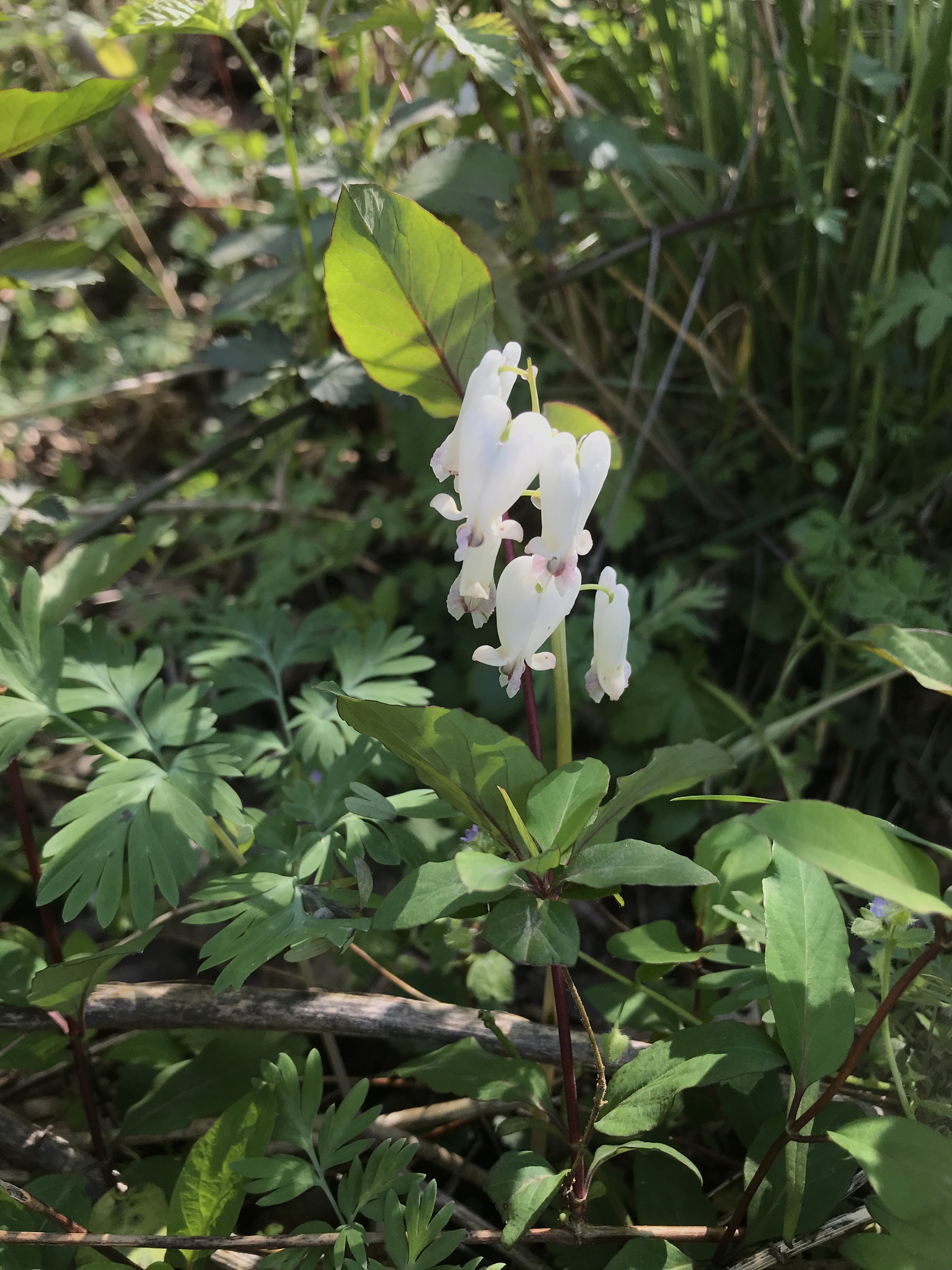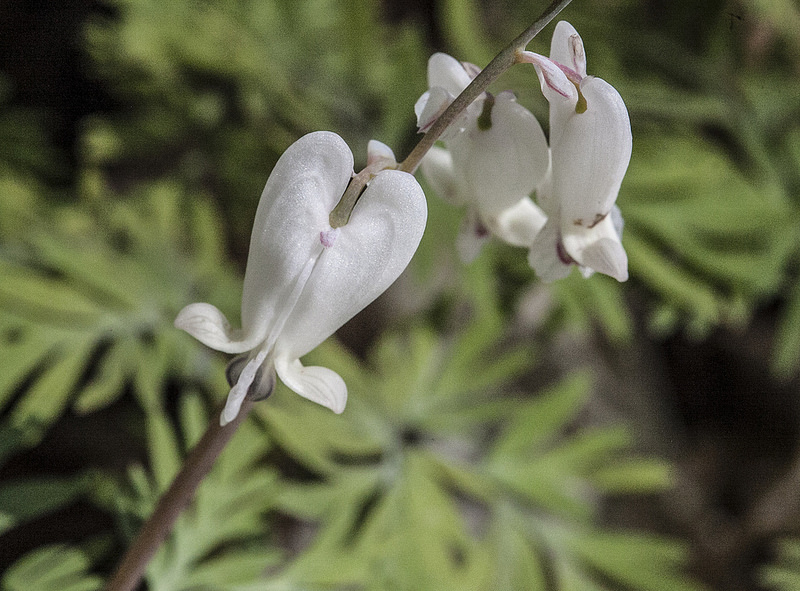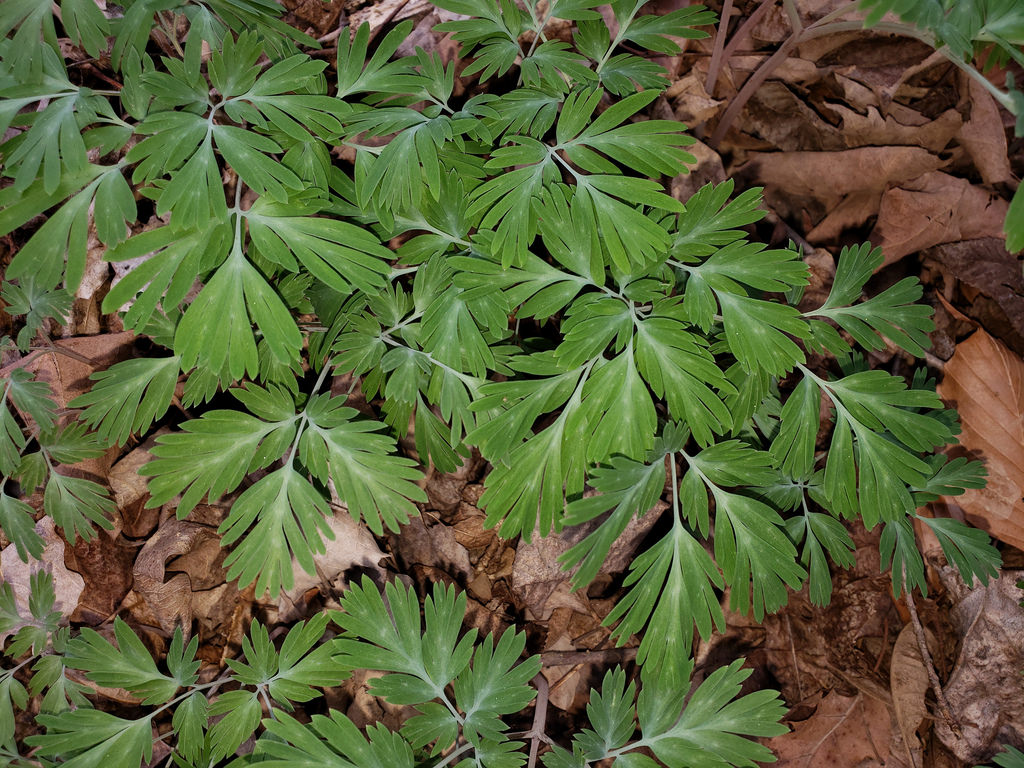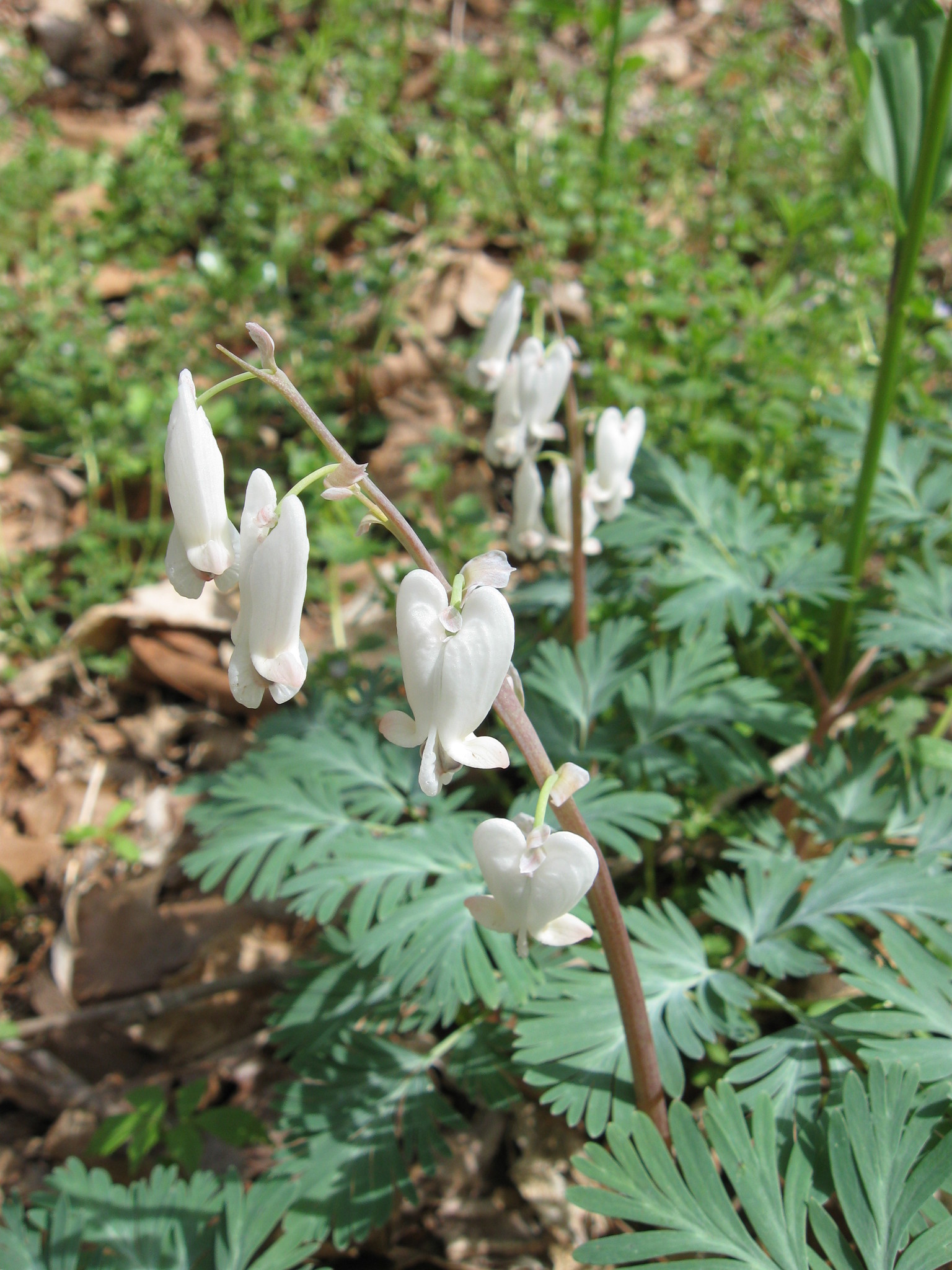Map Snapshot








239 Records
Status
Squirrel Corn is a perennial plant that occurs throughout most of eastern North America.
Description
Squirrel Corn grows from short, bulblet-bearing rhizomes. It is closely related, and similar in appearance, to Dutchman's Breeches. The flowers of both species have two pairs of petals. The outer pair form nectar spurs, which are rounded and heart-shaped in Squirrel Corn (and long and spreading in Dutchman’s Breeches). In both species, the two inner petals, which are much smaller than the outer ones, form the base of the flower. The leaves can be difficult to tell apart unless seen side by side: Both are compound, with finely divided leaflets, somewhat resembling a fern. Squirrel Corn leaves often have a more bluish tinge than Dutchman’s leaves.
Where To Find
Squirrel Corn is a spring ephemeral of rich, mesic cove and slope forests and rich flooplain foests (Weakley, et al., 2012).
Relationships
The flowers of Squirrel Corn, like those of Dutchman's Breeches, are pollinated mainly by early bees (bumblebees) that have tongues long enough to reach into the spurs for nectar.
The seeds of both species are distributed by ants, which are attracted to fleshy or oily seed appendages called elaiosomes. Ants carry the seeds to their nests, eat the elaiosomes, and leave the seeds intact.
Because the foliage of Squirrel Corn and Dutchman's Breeches is toxic, it is usually avoided by mammalian herbivores, such as deer. This may partly explain why these two plant species can remain abundant in places where some other herbs have become uncommon.
Seasonality Snapshot
Source: Wikipedia
| Dicentra canadensis | |
|---|---|
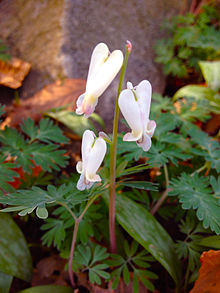
| |
| Scientific classification | |
| Kingdom: | Plantae |
| Clade: | Tracheophytes |
| Clade: | Angiosperms |
| Clade: | Eudicots |
| Order: | Ranunculales |
| Family: | Papaveraceae |
| Genus: | Dicentra |
| Species: | D. canadensis
|
| Binomial name | |
| Dicentra canadensis | |
Dicentra canadensis, the squirrel corn,[2] is a flowering plant from eastern North America with oddly shaped white flowers and finely divided leaves.
Description
[edit]Squirrel corn has small yellow clustered bulblets (looking roughly like kernels of corn), finely dissected leaves, and white heart-shaped flowers. The flowers are fragrant.[3] It is a spring ephemeral, leafing out and flowering in spring and going dormant in summer.
Distribution and habitat
[edit]It is native to deciduous woodland in eastern North America. It is also found among rock outcrops near mountains.[4]
References
[edit]- ^ NatureServe (5 January 2024). "Dicentra canadensis". NatureServe Network Biodiversity Location Data accessed through NatureServe Explorer. Arlington, Virginia: NatureServe. Retrieved 18 January 2024.
- ^ NRCS. "Dicentra canadensis". PLANTS Database. United States Department of Agriculture (USDA). Retrieved 17 January 2016.
- ^ "Lady Bird Johnson Wildflower Center - The University of Texas at Austin". www.wildflower.org. Retrieved 2021-10-19.
- ^ "Dicentra canadensis (Squirrel Corn) | North Carolina Extension Gardener Plant Toolbox". plants.ces.ncsu.edu. Retrieved 2021-10-19.
- Blanchan, Neltje (1917) [Originally published in 1900 as Nature's Garden: An Aid to Knowledge of our Wild Flowers and their Insect Visitors]. Wild Flowers Worth Knowing. Adapted from Blanchan's Nature's Garden by Asa Don Dickinson. Garden City, New York: Doubleday, Page & Company. Retrieved 18 January 2024 – via Project Gutenberg Literary Archive Foundation.[page needed]
- Bleeding hearts, Corydalis, and their relatives. Mark Tebbitt, Magnus Lidén, and Henrik Zetterlund. Timber Press. 2008. ISBN 978-0881928822[page needed]

